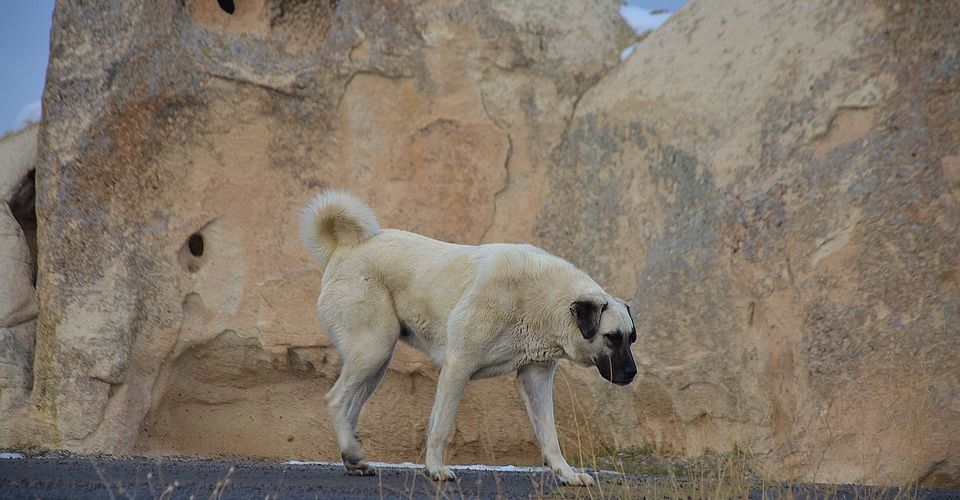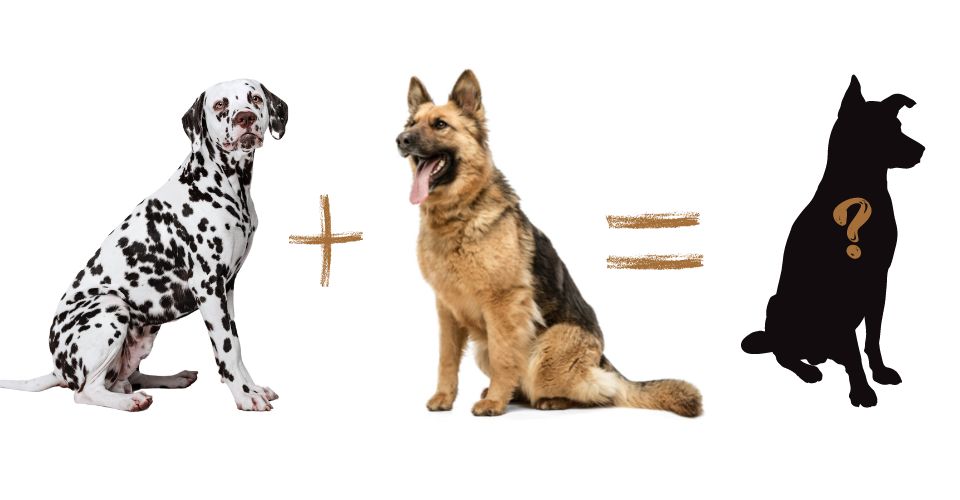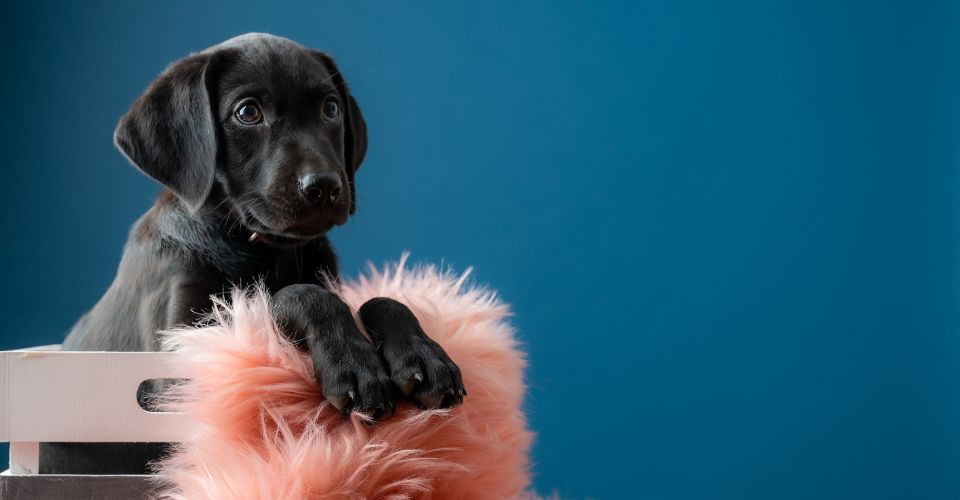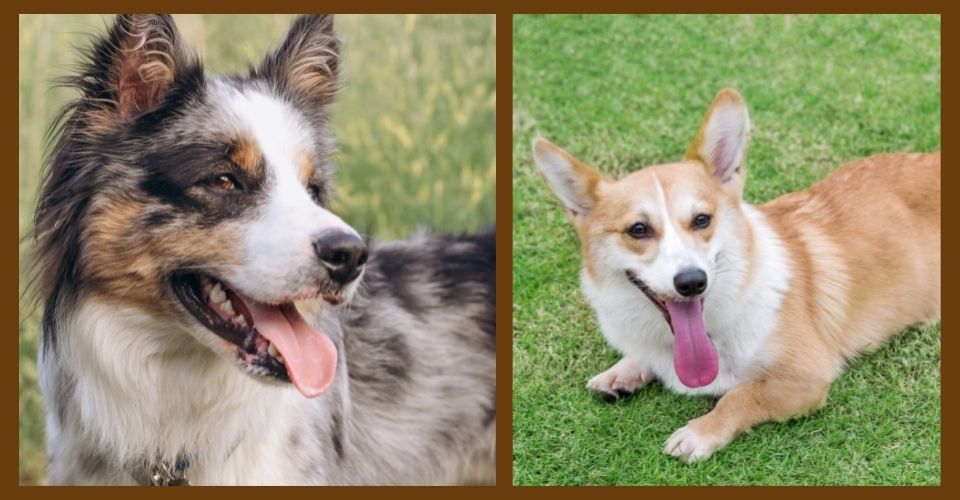What to expect when two gentle giants combine – the Great Dane and the English Mastiff? We will see all nitty-gritty shortly, but know that it gives some of the best joys of big dogs ownership!
Being truly talented rockstars, Great Dane Mastiff mix dogs make great partners for life – inheriting affection from one parent and calmness from the other. Here is all you need to know about this huge hybrid.
Great Dane Mastiff Mix Overview
Great Dane Mastiff Mix Hybrid Overview
Other Names: Masidane, Daniff, English Daniff, Mastidane, and Great Daniff
Size: 27 to 33 inches
Weight: 115 to 190 pounds
Common Coat Colors: Black, white, brindle, mantle, harlequin, and fawn
Hypoallergenic?: No
Lifespan: Eight to 12 years
Appearance
The Great Dane Mastiff mix is a large hybrid dog with long legs and a sturdy frame. These pooches have the physical appearance of both parents – with a blink of an eye, they might look like Great Danes; with others, like Mastiffs. But their accurate description might be the chubbier and thicker variant of the Great Danes.
Their muzzle is long with a strong jaw inside, and these dogs have wrinkles and jowls all over the face similar to Mastiffs. Like both parents, the ears are hanging, the head is big, and the tail is long.
The coat is short and smooth but somewhat dense. It also has some amazing colors; however, mostly they are mostly found in black.
Personality and Temperament
The Great Dane Mastiff mix comes with some of the most worthwhile personality attributes. Despite their immense size, these pooches are never intimidating to people, especially children. With them, they like to do nothing more than snuggle and cuddle.
Furthermore, these canines are pretty friendly and tend to form a close attachment with each person at home – thanks to their gentle nature inherited from Great Dane parents and calm temperament coming from Mastiff genes.
However, their personality has some shortcomings too. For instance, they are quite stubborn, which makes them hard to train and even harder to manage when they grow up to their full size. Similarly, they are occasionally very protective of their owners, leading them to bark at the guests since the latter are perceived as strangers.
History
Originally bred for designer purposes, the Great Dane Mastiff mix made its first appearance in the U.S. The hybrid originated almost a decade and a half ago and rose to prominence afterward because of the physical and personality traits belonging to the parents. It is pertinent here to glance over the history of those breeds to better grasp the background of the Great Dane Mastiff mix.
Great Dane

Among the largest dog breeds in the world, the Great Danes originated in Germany. It is said that the breed is a mixture of the Irish Wolf, the Greyhound, and several other big dogs, and their lineage can be traced back to as earlier as the 13th century B.C. These dogs were specifically bred for hunting boars, deer, and bears.
Mastiff
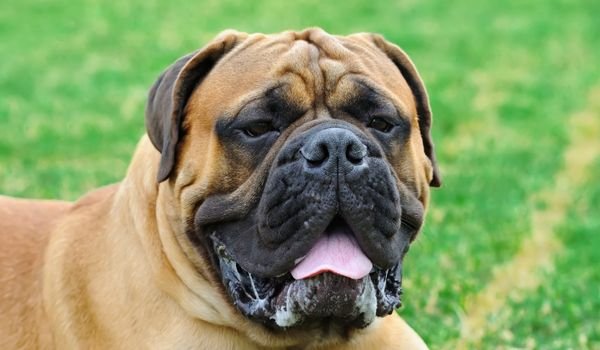
Kept as guard dogs and popularly utilized for fighting and hunting, Mastiffs originated in central Asia. As various nomads and traders kept these dogs for security, they spread worldwide and became very popular. Several sources claim that these dogs can trace their lineage back to 2500 B.C.
The breed hit American shores during the colonial era, and the Mastiff club was formed in 1879.
Size and Weight Growth Chart
| Age | Female | Male | ||
| Weight (lb) | Height (in) | Weight (lb) | Height (in) | |
| 8 Weeks | 18 | 14 | 23 | 16 |
| 10 Weeks | 22 | 15 | 31 | 17 |
| 12 Weeks | 30 | 18 | 33 | 21 |
| 4 Months | 48 | 22 | 55 | 24 |
| 5 Months | 60 | 24 | 75 | 27 |
| 6 Months | 75 | 27 | 88 | 30 |
| 7 Months | 82 | 28 | 110 | 31 |
| 8 Months | 86 | 29 | 130 | 31 |
| 9 Months | 90 | 29 | 150 | 32 |
| 10 Months | 92 | 29 | 160 | 32 |
| 1 Year | 100 | 29 | 175 | 33 |
| 2 Years | 115 | 31 | 190 | 33 |
Great Dane Mastiff Mix Care
Diet
Great Dane Mastiff mixes are large and energetic, even in their puppyhood. Therefore, they need an appropriate feeding plan accordingly. Ideally, they should get food that is rich in lean protein, such as meat, fish, and poultry. The fat content should be low to moderate, the kibble size should be large to reduce the chances of bloating, and glucosamine and chondroitin must be included to keep joint problems at bay.
If you choose dry food for your Great Dane Mastiff mix, go for at least four and a half to five cups daily. For wet food, offer your dog around 10 ounces per 10 to 12 pounds of body weight every day.
Great Dane Mastiff Mix Feeding Cautions
- These dogs are prone to bloating. Make sure your dog does not eat too quickly.
- Dietary needs change with age. Keep your vet in the loop as your pup grows.
- Due to the large size and fast metabolism rate, ensure the proper food supply.
Exercise
Bestowed with the energy of Great Dane and Mastiffs, these dogs need at least one to two hours of moderate to intense physical activities period every day. For pups, the time can vary, and it must be kept short since bones and joints are not fully developed at that age. Moreover, since crossbreeds take long enough to mature, they must not be put into strenuous physical activities before their physical health is taken care of.
Great Dane Mastiff Mix dogs are always looking forward to outdoor activities with their family (especially if your dog sees you as a pack leader!). Being adventurous, these dogs do not mind hitting hard terrain and doing difficult jobs.
Training
Inheriting easy to moderate training needs, the Great Dane Mastiff mix dogs are not a tough nut to crack when it comes to teaching them anything. Nevertheless, note that maximum ease is attainable only when training is started earlier (around eight to 10 weeks of age). As the pups grow up, their sheer size and developing laid-back nature may make it somewhat harder for them to learn.
To-Do List For Training a Great Dane Mastiff Mix
- Start as earlier as possible
- Begin with teaching basic commands followed by respect training and high-level commands
- Always reward your pup
- If you are not satisfied, vent your emotions calmly but friendly
- If your dog sleeps during training, postpone the session
- Always be patient
Grooming
Fortunately, Great Dane Mastiff mix dogs do not shed much due to their short coat, making their brushing requirements minimal. However, to minimize it further and make your dog look like a prince charming all the time, you must consider bathing him every week and brushing him every third day.
Pay special attention to the paws too. Make sure you cut the nails every two to three weeks – since this mix is prone to arthritis, longer nails may lead to a change in ankle posture that can ultimately accelerate your pooch to this health problem. Also, find your dog some cool Great Dane shoes that make him feel comfortable while walking and keep the dirt away from the feet.
For the teeth and the ears, consider cleaning them once every week, even if your dog is only a pup.
Health Issues
Having giant frames, Great Dane Mastiff mix dogs are overall healthy. Moreover, their average lifespan is also satisfactory. However, certain minor and major conditions are known to impact their well-being often. These issues are inherited and prevail in the parent breeds as well. The list includes:
- Cystinuria: A genetic disorder in which a dog cannot filter out cystine from the urine, leading to stone formation.
- Dysplasia: Joints become loose, which causes pain and dysfunction. Cartilage and bones wear down, causing several other health issues.
- Epilepsy: Due to brain abnormality, unprovoked seizures occur in dogs. Unfortunately, this problem has no cure.
- Gastric torsion: The stomach becomes inflated with gas. It is twisted and becomes life-threatening if not addressed in time.
- Osteoarthritis: It is a joint problem that leads to permanent cushioning and cartilage deterioration. If a dog does not receive enough care, it can be fatal.
- Osteosarcoma: Also known as a bone tumor, it can arise anywhere in the skeleton and sometimes in the tissues too. On average, dogs with osteosarcoma survive for five to six years.
Note that these conditions usually develop slowly and cause gradual deterioration of the health over a longer period, with signs and symptoms often showing up late.
Great Dane Mastiff Mix FAQs
Are Great Dane Mastiff Mix Dogs Good For Children and Other Pets?
Yes, but care must be taken. Though they are affectionate and gentle, Great Dane Mastiff mix pooches are too large and can easily knock over a child or other small pet when hit hard enough. This can also increase the chances of injury. Similarly, they must be ‘calibrated’ well before interacting with other pets: socialization is the key. Just introducing your pooch properly with other pets before making them roam freely together is the safest option.
How to Find a Healthy Great Dane Mastiff Mix?
The key is to approach a reputable breeder and get a full-scale screening test for your pup. Going to a well-known breeder makes it much more likely to get a healthy pup since they have maintained health standards and have already done screening tests. However, they might charge you up to USD 1,000. Conversely, you will have to pay less if you opt for adoption.
How to Make Sure You Can Meet Great Dane Mastiff Mix Requirements?
Going through the information shared above and judging if you can meet the requirements should work fine. However, the following checklist can make the matter even easier:
- Do you have a large home with a fenced backyard?
- Are you and the home dwellers okay with large dogs?
- Can you manage at least two hours each day for your dog?
- Some sources claim these dogs may cost up to USD 18,000 over their lifetime. Can you afford it?
Why You Should or Should Not Get a Great Dane Mastiff Mix?
Pros
- They are very gentle and easygoing. Despite their huge size, they fit right into the family
- They can be used for guarding
- They are cool around other pets
- They do not shed much, and grooming is not a tough job
- Training them is easy
Cons
- They need enough space in the house. They are certainly not an apartment breed
- They inherit several health problems, and their lifespan is also not impressive
- Though they are easy to train and socialize with, they do need enough time to act normal in front of children and other pets


